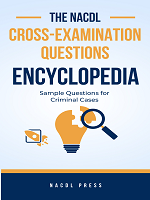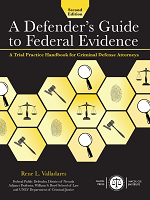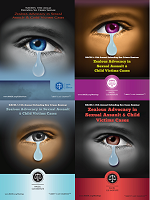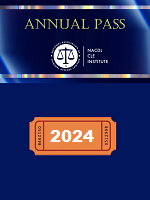Access to The Champion archive is one of many exclusive member benefits. It’s normally restricted to just NACDL members. However, this content, and others like it, is available to everyone in order to educate the public on why criminal justice reform is a necessity.
It seems so elementary. It should be obvious. It should not have to be a daily struggle in criminal courtrooms throughout the country, but it is. Sadly, the struggle to obtain information favorable to an accused that rests in the hands of prosecutors and their agents rages on 50 years after the Supreme Court declared in Brady v. Maryland that the suppression by the prosecution of evidence favorable to an accused upon request violates due process where the evidence is material either to guilt or to punishment, irrespective of the good faith or bad faith of the prosecution. And so the 50th anniversary of Brady, which occurred on May 13, 2013, is less a celebration than a lamentation.
In a criminal justice system founded on the principle of due process, there is something fundamentally wrong when that system time and again permits the suppression of favorable evidence that can prevent a wrongful conviction or mitigate a harsh sentence. Yet that is an undeniable reality. Brady violations and the resulting injustice they cause are pervasive. Defense lawyers have known this for years, but the recent spate of high visibility cases has now elevated the issue to an unprecedented level of public consciousness and concern. It is about time.
Criminal defense lawyers learn early on in their careers that the struggle for Brady material is one that must be waged in almost every case. In most jurisdictions, it is the defense lawyer who not only must affirmatively seek helpful evidence from the prosecution, but often must demand it with exacting precision, pursue those demands throughout the case, and then aggressively seek an ameliorative remedy when disclosure or discovery of evidence comes so late as to have already impeded the defense investigation, preparation, or presentation. At every stage of a criminal case, prosecutors and judges are all too ready to invoke waiver doctrines, accord only the most minimal relief for delayed disclosure, or retrospectively dismiss a violation as not material. A culture of nondisclosure, which permeates many prosecutors’ offices and which has been indulged by a compliant judiciary, has effectively shifted the burden of procuring favorable evidence onto the person least equipped to identify and procure it — the defense lawyer.
Of course it does not have to be this way. Things could be different. The American criminal justice system could foster a culture of disclosure. It could operate on the presumption that all evidence, subject to reasonable protective measures for witness security, is equally available to the defense as it is to the prosecution. The system could deal sufficiently harshly with nondisclosure of favorable evidence as to prospectively discourage gamesmanship.
There is a growing recognition that suppression of favorable evidence is an intolerable blot on the nation’s criminal justice system. NACDL hopes that this special edition of The Champion will help propel the reform process and better equip the defense bar to litigate enforcement of this fundamental constitutional right to fairness. The articles featured in this issue present a comprehensive overview of the state of the Brady doctrine at 50, offer practical suggestions for how defense litigators can most effectively obtain Brady material in a timely fashion, and provide a roadmap for reformers to at long last secure the promise of the Brady decision. For NACDL, this is a signature issue. For clients, it can make the difference between conviction and acquittal, and between exoneration and condemnation. For the criminal justice system, it is a litmus test for whether fundamental constitutional principles exist in reality and not just in theory.






